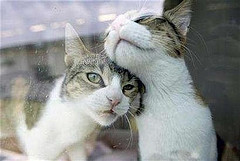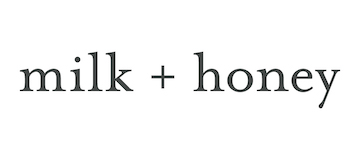Matt is one of our fantastic massage therapists at milk + honey spa 2nd Street District.
Valentine’s Day is upon us. Whether you prefer to ignore the holiday or embrace your romantic side, love is all around us, especially in the touch.
 Standard descriptions of our holiday describe a cloudy syncretism of historical figures (all martyrs for love), Catholicism, and pagan rituals Click here for History.com’s take on Valentine’s Day. Historians often reach back to 270-300 A.D. to initiate this romantic drama. Mother nature on the other hand seems to have reached back beyond man, beyond monkey, maybe all the way to the vole.
Standard descriptions of our holiday describe a cloudy syncretism of historical figures (all martyrs for love), Catholicism, and pagan rituals Click here for History.com’s take on Valentine’s Day. Historians often reach back to 270-300 A.D. to initiate this romantic drama. Mother nature on the other hand seems to have reached back beyond man, beyond monkey, maybe all the way to the vole.
Have you ever heard of oxytocin? I first heard about this hormone when I was in massage school, but it has since emerged into popular discourse as well. It seems to be present in every mammal on the planet. Human physiology text books echo the initial clinical scrutiny of this nine amino acid chain as a hormone produced by the sex organs for the purpose of letting down milk and contracting the uterus, but subsequent research has revealed a more utilitarian and ubiquitous character to this powerful protein.
First let me kill the suspense, yes oxytocin floods your system before, during, and after all of your sexual experiences. Likewise, laboring mothers experience a massive download of the stuff during and following labor and delivery. The experience of maternal love at first sight, and the amnesia of child bearing pain that sets in when a mother first holds her child, are both moments undoubtedly framed in the pink hazy frill of oxytocin.
I reckon it satisfies some pretty obvious reward systems that perpetuate any species with fur on their bodies, but what is it? A cursory web search describes oxytocin as a wonder molecule that increases feelings of trust and intimacy but it goes deeper than that. Dr Ray Sahelian dryly details a more clinical side to oxytocin on his own forum. He describes a powerful neurohormone and modulator that the hypothatlamic and supraoptic nuclei of the brain, as well as peripheral tissues of the heart and sex organs, produce. The hormone acts on those tissues, as well as the kidney, thymus, and pancreas, resulting in a body-wide response.
As it turns out oxytocin reduces the effects associated with stress and anxiety. It helps reduce blood pressure and cortisol levels, increases our pain threshold and directly affects the amgdyla in tempering our anxiety level. In short, everything you need for your loved ones to announce that “both mother and child are well” can be provided by this brilliant bio-character.
Oxytocin has a more humanitarian and platonic side to it as well. In addition to combating stress, pain and fear, oxytocin stimulates positive social interaction and promotes growth and healing as well. Furthermore, it just makes you feel good, content, dreamy. Put one way, it’s what makes little kids like puppies and makes puppies like little kids. It’s why cats purr. It probably plays a role in pack identity. In his brilliant collection of essays “The Scientification of Love,” French obstetrician Michel Odent extends these implications and explores the role of oxytocin in promoting healthier civilizations in general.
In this light, oxytocin is quite simply the peptide that binds. Since it feels good and is good for you, you may want to up your dose. Given its immense utility, it comes as no surprise that other stimuli outside the range of coupling and mating also trigger its release. Though supported by less rigorous literature visual and olfactory sensations will trigger it. Eating with friends and family trigger it as well.
Call it dinner and a movie … plus a spa day. Increasingly it seems that basic well-intentioned touch and warmth trigger oxytocin as well. Massage in all its forms release oxytocin, though the lighter kinds associated with true Swedish massage and facials probably release more. A few years ago journalist Roni Caryn Rabin reported for the New York Times on the subject, click here to read. Researchers at Cedars-Sinai Medical Center in Los Angeles who found that massage increased levels of oxytocin (and decreased stress hormones such as cortisol), and that a single session produced biological changes. That post-massage, wet noodle feeling of contentment where all you need is a nap is in part due to oxytocin.
So basically anytime you get that warm fuzzy feeling inside, oxytocin is probably lurking in the background, marshaling biological changes that promote your health. As our understanding about it increases, it seems to do nothing other than confirm our biological bias for falling in love, for starting families, to look after each other, to live with pets, and to build community. You are built to experience love, connection, and bonding, and that is good for you.


No Comments